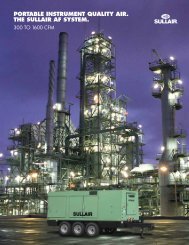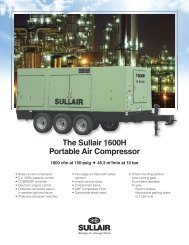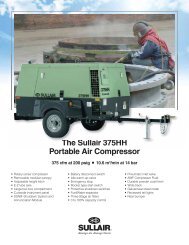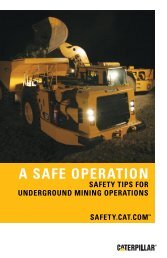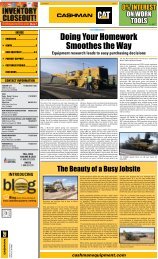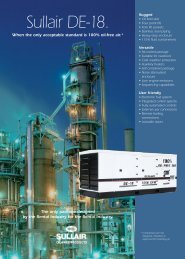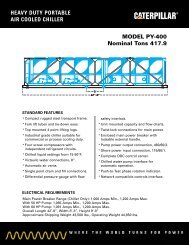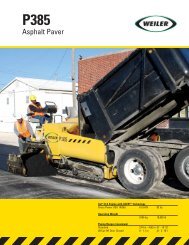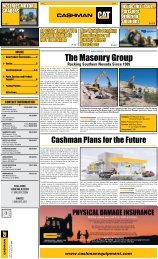Hydraulic System Management Guide
Hydraulic System Management Guide
Hydraulic System Management Guide
- No tags were found...
You also want an ePaper? Increase the reach of your titles
YUMPU automatically turns print PDFs into web optimized ePapers that Google loves.
Detection/CleanupKnow what is happeninginside your hydraulic systemsHelping to prevent contamination is important, but you also must know what isoccurring inside your hydraulic systems. Regular use of our S·O·S Services is the bestway to detect component wear and contamination so you can head off problems early.Take samples regularlyTaking hydraulic oil samples regularly—every 500 hours—is critical because itallows for accurate interpretation. When samples are taken regularly, a baseline isestablished so trends can emerge. We need this information to make proper servicerecommendations. How you take a sample is also important. For more information, askus to see video PEVN5514 (VHS tape) or AERV5514 (CD), both entitled “S·O·S ServicesOil Sampling Techniques.”The cleaner the system, the better!Caterpillar recommends a cleanliness target for optimizingcomponent life in Cat hydraulic systems of ISO 18/15 or cleaner.Understand our S·O·S SM ServicesS·O·S Services for hydraulic systems is composed of fourcomplementary tests:• Component Wear Rate Analysis evaluates the wear takingplace inside the lubricated compartment.• Oil Condition Analysis determines if the oil has degraded.• Oil Contamination Tests determine if anything harmful hasentered the oil.• Oil Identification confirms use of the correct oil.S·O·S interpreters use these tests to evaluate hydraulic systemhealth and, if needed, recommend maintenance.12



